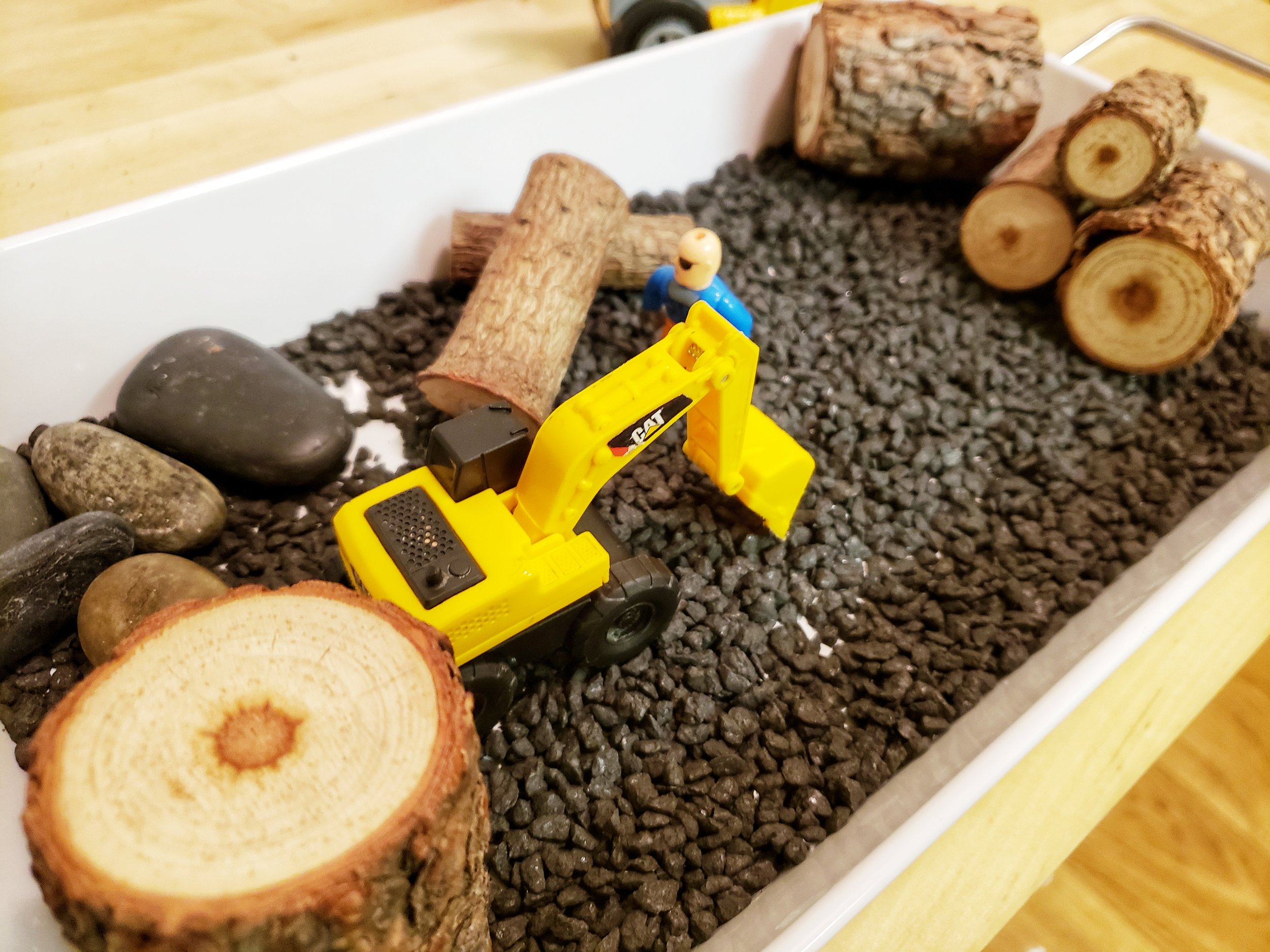Help! My kids are destroying things in our classroom!
Teaching young children how to respect their environment and materials in the classroom can feel like an uphill battle, especially when they're still learning to control their impulsive nature to toss, drop, and throw everything they see.
Helping children learn to navigate their environment without being destructive requires patience, intentional actions, and intentional language.
Before we start taking action on their behavior, first it's important to understand why children destroy or break things seemingly on purpose.
Many times their smashing, throwing, squishing, or other rough behavior with the classroom material isn't with destroying the items as the intention necessarily.
Children explore and learn by interacting with things and sometimes they're simply trying to figure out of they do one thing, what happens. They aren’t thinking “I want to break this just because!” but rather “I wonder what sound this makes when I drop it?” or something along those lines of exploration.
Their curiosity and thirst for knowledge doesn't always manifest itself in appropriate ways for the classroom environment.
While we're thrilled when a young child takes interest in the effects of gravity on their toy airplanes, it's not appropriate to let them fling it across a room where it can potentially hurt another student or break something. Likewise, you don't want the plane to break and no longer be of use to play with.
This is a good example of how their environment or adults can accidentally send mixed messages to our students.
Using the example above, the child’s understanding of airplanes is that they fly, so they throw it to make it “fly”. In this case, as a teacher, we might have to model imagining it flying, rather than throwing it. It’s our job to help them navigate these distinctions.
Then provide a way for them to explore aviation through other outlets like paper airplanes, observations of the sky, or books.
Another example is when we create something fun and inviting such as a “small world” scene. It can be a bit tough to watch their little hands flatten down your carefully placed fairy houses and mix up the sand and water from your thoughtfully designed beach environment, however, it's important to remember the purpose of those kinds of things.
You want your students to engage and interact with the material and sometimes that means letting them explore things fully, even if they're not using it the way our adult minds would like.
Either way, we want them to understand that we still appreciate and respect the classroom and all of its materials. As a community, everyone contributes to taking care of it.
Here are five ways you can encourage your students to use their classroom materials respectfully.
Have materials in the classroom that require special care and handling. I know it sounds counterintuitive but it’s great practice and sends the message that you trust them with these items and that if they enjoy these materials, they’ll have to take care of it.
Dollar store ceramic vases and figurines are sturdy enough to handle a few drops but still require children to use caution when handling. Frequently demonstrate how they can hold and handle it and give them opportunities to do the same.
Explain what happens if it breaks and teach them safety rules in case it does get dropped and shatters (in our classroom the safety rule is to immediately freeze, then call for an adult). Don't fret if you end up going through a few broken items before they get a hang of it. It's all part of the learning process.
Discuss and fix items with the children. When a book is torn or a toy is broken, don't just reprimand the child and throw the item away to never be seen again. Use it as a learning opportunity.
Tape and repair the book at group time or glue the toy back together with the child who broke it. Discuss with them what happens when the material is torn and broken. If the item is safe to still be used, consider returning it to the classroom and give reminders of how to use it correctly when needed. If you don’t return it to be used, let them know why it’s no longer for use in the classroom.
Give them a few items first and introduce more as they become familiar with the classroom. Especially during the beginning of the school year (and after long breaks like Winter Break, if you have them), and after rearranging the classroom.
Before or shortly after setting a new toy or item out in the classroom, have a group time discussion about the new item, what they like about it, and how they’re to treat it.
Tune in to your student's needs. If they're consistently mistreating their material and not engaging in genuine play then it could be a sign they've tired of it, are no longer challenged by it, or they're seeking an outlet for something that's not available to them in the environment.
An example of this could be having children (2-year-olds & up) dumping out containers of toys but walking away and not playing with them (dumping toys is normal for very young toddlers).
This is a good time to take an evaluation of your classroom and see if there are some changes that need to be made or review your observations to see if the child is seeking some kind of input.
Have them contribute to the classroom decor and make their classroom beautiful. As adults, we tend to unknowingly impose our adult perspective on their world. Carefully consider the purpose of the decor and its placement.
How much of it is made by the children themselves? Is your wall overcrowded with store-bought posters? Is the decor too busy, loud, or stimulating?
There's a strong correlation between classroom decor and student behavior, and when you feel invited and comfortable in your environment, you're more likely to care for it.
And through all this remember that it takes an enormous amount of patience, consistency, and repetition before children fully grasp ideas. Don't be discouraged if your students stop picking the petals off the classroom flowers only to begin tearing the new pictures.
Take a deep breath, celebrate your previous wins, then focus your attention on the new task at hand.











Aggressive behavior like hitting, kicking, and biting are easily cited as one of the most stressful behaviors in the early childhood classroom. Here are some tips for handling aggressive behavior in the PreK/daycare classroom.